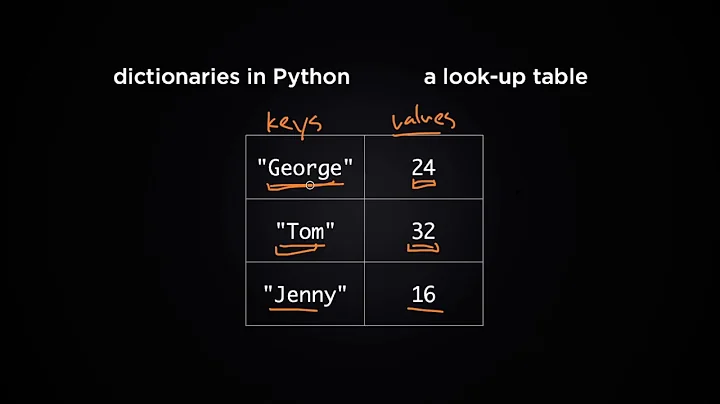NaNs as key in dictionaries
Solution 1
The problem here is that NaN is not equal to itself, as defined in the IEEE standard for floating point numbers:
>>> float("nan") == float("nan")
False
When a dictionary looks up a key, it roughly does this:
Compute the hash of the key to be looked up.
-
For each key in the dict with the same hash, check if it matches the key to be looked up. This check consists of
a. Checking for object identity: If the key in the dictionary and the key to be looked up are the same object as indicated by the
isoperator, the key was found.b. If the first check failed, check for equality using the
__eq__operator.
The first example succeeds, since np.nan and np.nan are the same object, so it does not matter they don't compare equal:
>>> numpy.nan is numpy.nan
True
In the second case, np.float64(np.nan) and np.float64(np.nan) are not the same object -- the two constructor calls create two distinct objects:
>>> numpy.float64(numpy.nan) is numpy.float64(numpy.nan)
False
Since the objects also do not compare equal, the dictionary concludes the key is not found and throws a KeyError.
You can even do this:
>>> a = float("nan")
>>> b = float("nan")
>>> {a: 1, b: 2}
{nan: 1, nan: 2}
In conclusion, it seems a saner idea to avoid NaN as a dictionary key.
Solution 2
Please note this is not the case anymore in Python 3.6:
>>> d = float("nan") #object nan
>>> d
nan
>>> c = {"a": 3, d: 4}
>>> c["a"]
3
>>> c[d]
4
In this example c is a dictionary that contains the value 3 associated to the key "a" and the value 4 associated to the key NaN.
The way Python 3.6 internally looks up in the dictionary has changed. Now, the first thing it does is compare the two pointers that represent the underlying variables. If they point to the same object, then the two objects are considered the same (well, technically we are comparing one object with itself). Otherwise, their hash is compared, if the hash is different, then the two objects are considered different. If at this point the equality of the objects has not been decided, then their comparators are called (they are "manually" compared, so to speak).
This means that although IEEE754 specifies that NAN isn't equal to itself:
>>> d == d
False
When looking up a dictionary, the underlying pointers of the variables are the first thing to be compared. Because these they point to the same object NaN, the dictionary returns 4.
Note also that not all NaN objects are exactly the same:
>>> e = float("nan")
>>> e == d
False
>>> c[e]
Traceback (most recent call last):
File "<stdin>", line 1, in <module>
KeyError: nan
>>> c[d]
4
So, to summarize. Dictionaries prioritize performance by trying to compare if the underlying objects are the same. They have hash comparison and comparisons as fallback. Moreover, not every NaN represents the same underlying object.
One has to be very careful when dealing with NaNs as keys to dictionaries, adding such a key makes the underlying value impossible to reach unless you depend on the property described here. This property may change in the future (somewhat unlikely, but possible). Proceed with care.
Related videos on Youtube
hamogu
Updated on June 01, 2022Comments
-
hamogu almost 2 years
Can anyone explain the following behaviour to me?
>>> import numpy as np >>> {np.nan: 5}[np.nan] 5 >>> {float64(np.nan): 5}[float64(np.nan)] KeyError: nanWhy does it work in the first case, but not in the second? Additionally, I found that the following DOES work:
>>> a ={a: 5}[a] float64(np.nan) -
 yatu over 3 yearsThis seems to fail again on python 3.8
yatu over 3 yearsThis seems to fail again on python 3.8









